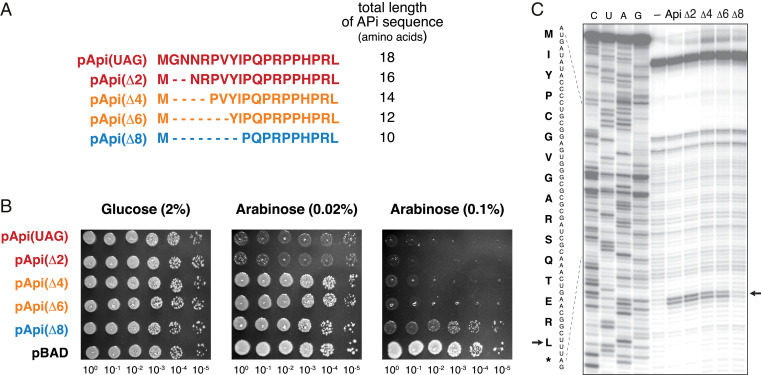Fig. 3.
Api variants with N-terminal truncations preserve their on-target activity. (A) The sequences of the truncated Api derivatives encoded in pApi(UAG) plasmids. The sequences are colored according to the toxicity level of the variant (as determined by the experiment shown in B): red: full activity; orange: moderate activity; blue: residual toxicity. (B) Growth of cells expressing truncated Api variants under no induction (2% glucose), mild induction (0.02% arabinose), or strong induction (0.1% arabinose) conditions. Cells with an empty pBAD vector were used as a control. (C) Toeprinting analysis of the ribosome arrest induced by the synthetic Api1b peptide (lane marked “Api”) or its N-terminally truncated derivatives (Δn); the lane marked "-" contains the control sample to which no inhibitor was added. The model ORF is derived from the E. coli gene yrbA (1). The sequences of the synthetic peptides are identical to those shown in A, except they lack the N-terminal methionine. The toeprint band corresponding to the ribosomes arrested with the stop codon in the A site is shown by a black arrow. The nucleotide sequence of the gene and the amino-acid sequence of the encoded protein are shown.

